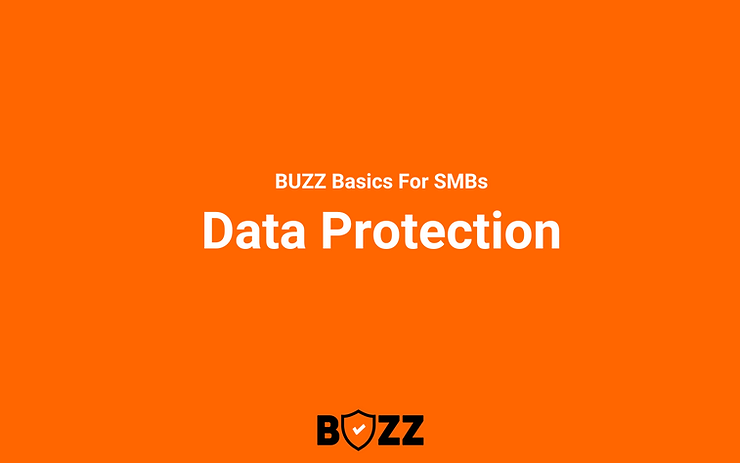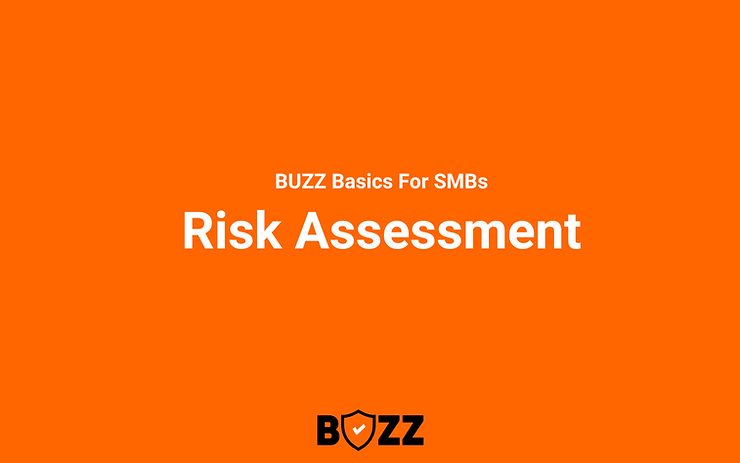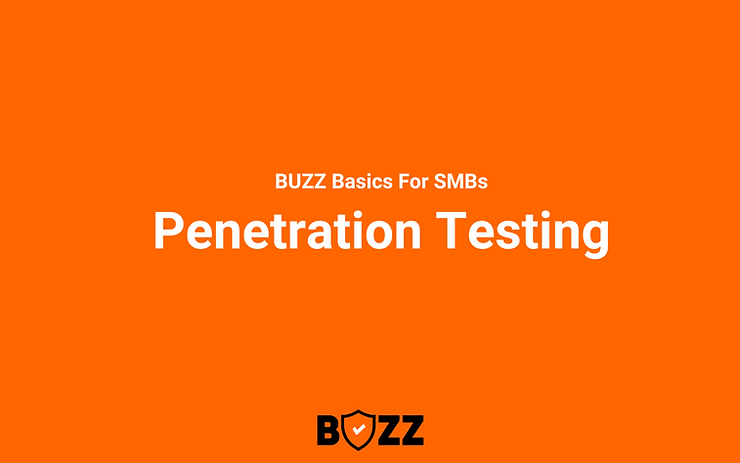Data has emerged as one of the most valuable assets for businesses of all sizes – from customer details to financial records, the data your business holds is akin to the lifeblood that keeps your operations running smoothly. But just as this data can be a source of growth and opportunity, it can also be a potential vulnerability if not adequately protected.
Did you know that 60% of small businesses that suffer a cyber attack go out of business within six months? Data protection is a necessity.
SMBs often overlook crucial aspects of data protection, making them attractive targets for cybercriminals. The misconception that “it won’t happen to us because we’re too small” has unfortunately led many SMBs into the snares of data breaches, with devastating consequences.
As we delve deeper into this topic, we aim to provide SMB executives with a clear, concise, and expert-driven guide to navigating the complexities of data protection – your business’s success and reputation depend on it.
Data Protection for SMBs – What can you expect
The Rise Of Cyber Crime: It’s All About The Data
Understanding Data Protection: Breaking Down the Basics
Deep Dive into Data Protection for SMBs
How To Evaluate Tools For Data Protection?
Why Should An SMB Bother With Data Protection?
The Rise Of Cyber Crime: It’s All About The Data
Cyber breaches have become increasingly common, with a staggering 83% of breaches involving external actors and 74% of breaches involving the human element, including social engineering attacks, errors, or misuse.
The median cost per ransomware more than doubled over the past two years to $26,000, with 95% of incidents that experienced a loss costing between $1 and $2.25 million.
A breach can result in lost consumers, legal ramifications, and a ruined brand image. The cost, both monetary and intangible, can be enormous. SMBs must identify the risks, keep informed, and make proactive efforts to protect their most precious asset: data.
The key takeaway? Take measures to protect your data.
Understanding Data Protection: Breaking Down the Basics
Now, we know why we need to keep our data protected. Lets start by looking at a few core components –
What is Data Protection?
At its most fundamental level, data protection refers to the practices and strategies put in place to safeguard sensitive information from unauthorized access, breaches, and theft. Think of it as a digital fort built around your business’s valuable data, ensuring it remains confidential, intact, and available when needed.
What is Data Discovery and Classification?
Before you can protect your data, you need to know what you have and where it resides. This is where data discovery comes into play. It’s the process of identifying and cataloging data across various sources within an organization.
Once discovered, data classification takes the next step. It categorizes the data based on its sensitivity and importance. For instance, customer credit card details would be classified as highly sensitive, while a public-facing company brochure might be considered low sensitivity.
Why is this essential?
By understanding what data you hold and its significance, you can allocate resources effectively to protect the most critical information.
High-Level Data Protection Techniques
Encryption
This is the process of converting data into a code to prevent unauthorized access. Imagine it as a secret language that only you and trusted entities understand.
Tokenization
A method where sensitive data is replaced with non-sensitive placeholders or ‘tokens’. Unlike encryption, where data can be decrypted back to its original form, tokenized data remains permanently altered and can only be reverted using a secure tokenization system.
Access Controls
These are digital barriers that ensure only authorized individuals can view or modify specific data. Think of it as a VIP list for your data, where only those on the list can enter the exclusive club.
Firewalls
These act as gatekeepers, monitoring and controlling incoming and outgoing network traffic based on predetermined security policies.
Regular Backups
Creating regular copies of your data ensures that, in the event of a breach or system failure, your business can quickly recover and resume operations.
By understanding its foundational concepts and employing the right techniques, SMBs have a broad understanding of various data protection techniques that can be applied to protect their data.
Deep Dive into Data Protection for SMBs
Now, that you have a basic understanding of the various ways to protect data – lets understand each in more detail.
Data Discovery & Classification
Data discovery involves locating specific types of data across your systems. Once found, data classification categorizes this data based on its sensitivity. Knowing where sensitive data resides and its importance helps SMBs prioritize protection efforts.
- Use automated tools to scan databases and file systems.
- Categorize data into tiers (e.g., ‘Confidential’, ‘Private’, ‘Public’).
- Tools like AWS Macie or Azure Information Protection use patterns and AI to identify and classify data, tagging them for easy identification.
Data Encryption
Encryption converts readable data into a coded version, which can only be decoded with a specific key. It ensures data remains confidential, especially during transfers or if unauthorized access occurs.
- Encrypt sensitive data both at rest and in transit.
- Regularly rotate encryption keys.
- Algorithms like AES (symmetric) or RSA (asymmetric) are commonly used. Cloud services like AWS KMS or Azure Key Vault manage and safeguard keys.
Tokenization
Tokenization replaces sensitive data with non-sensitive tokens. The original data is securely stored and can only be accessed with the specific token system. It’s especially valuable for protecting payment or personal data, and reducing exposure.
- Implement tokenization for payment processing systems.
- Ensure a secure vault stores the original data.
- Unlike encryption, tokenized data can’t be mathematically reversed. There are many companies that offer robust tokenization capabilities.
Access Controls
Access controls determine who or what can view or use resources in a computing environment. They prevent unauthorized access, ensuring only trusted personnel can access sensitive data.
- Set up user roles and permissions.
- Regularly review and update access lists.
- Tools like AWS Identity and Access Management (IAM) or Azure Active Directory or other IAM solutions provide granular control over user access.
Regular Backups
Creating copies of data at regular intervals to ensure its availability in case of system failures or data breaches. Backups act as a safety net, allowing businesses to recover and restore data, ensuring continuity.
- Schedule daily or weekly backups.
- Store backups in a separate, secure location.
- Cloud solutions and many other providers offer automated backup services with encryption and retention policies.
Monitoring and Alerts
Systems that oversee data access and activities, sending alerts for any suspicious or unauthorized actions. Real-time monitoring provides an immediate overview of potential threats, allowing swift action.
- Implement monitoring tools.
- Set up alerts for unusual activities.
- Platforms like AWS CloudWatch or Azure Monitor or other monitoring solutions provide comprehensive monitoring with real-time alerting capabilities.
By understanding and implementing these data protection components, SMBs can not only safeguard their valuable data but also foster trust among stakeholders and customers, ensuring business continuity and growth.
How To Evaluate Tools For Data Protection?
When SMBs are evaluating tools for data protection, it’s essential to consider specific characteristics and criteria tailored to their unique needs. Here’s a breakdown of what to look for in tools for each data protection component:
Data Discovery & Classification
- Ease of Integration: The tool should easily integrate with existing systems and databases.
- Scalability: As the business grows, the tool should be able to handle increased data loads.
- Accuracy: It should reliably identify and classify sensitive data without many false positives or negatives.
- Regulatory Compliance: Ensure the tool aids in compliance with data protection regulations relevant to the SMB’s industry.
Data Encryption
- Strength of Encryption: The tool should use industry-standard and recognized encryption algorithms.
- Key Management: It should offer robust key management capabilities, including key rotation and secure storage.
- Performance: Encryption/decryption processes should not significantly slow down system performance.
- Cross-Platform Support: Compatibility with various operating systems and platforms.
Tokenization
- Security of Token Generation: The tool should generate tokens that are not easily reversible.
- Data Vault Security: Ensure the original data is stored securely.
- Integration with Payment Systems: If used for payment data, it should integrate seamlessly with payment gateways.
- Regulatory Compliance: Especially important if tokenizing payment or personal data.
Access Controls
- Granularity: The tool should offer fine-grained access controls, allowing specific permissions at detailed levels.
- Audit Trails: It should log all access attempts, successful or not, for review and compliance.
- Integration with Identity Providers: Compatibility with existing identity solutions or directories like LDAP.
- Multi-Factor Authentication: Enhanced security by requiring multiple forms of verification.
Regular Backups
- Automation: The tool should support scheduled automatic backups.
- Data Integrity Checks: Ensure that the backed-up data remains uncorrupted over time.
- Encryption: Backup data should be encrypted for added security.
- Storage Flexibility: Support for various storage solutions, from local drives to cloud storage.
Monitoring and Alerts
- Real-Time Monitoring: The tool should offer real-time or near-real-time monitoring capabilities.
- Customizable Alerts: Allow customization of alert thresholds and notification methods.
- Historical Data Analysis: Retain and analyze historical data for trends and long-term insights.
- Integration with Other Systems: Should integrate with other tools or platforms the SMB uses, for a unified monitoring approach.
Decision-Making Factors For SMBs
- Cost: Ensure the tool offers a good balance between features and cost.
- Support & Community: Availability of support, documentation, and an active community can be invaluable.
- Scalability: The tool should grow with the business, accommodating future needs.
- User-Friendliness: An intuitive interface and user experience can reduce the learning curve.
By considering these characteristics and criteria, SMBs can make informed decisions, ensuring they select tools that align with their data protection goals and operational needs.
Why Should An SMB Bother With Data Protection?
For Small and Medium Businesses (SMBs), the stakes for securing their data are even higher.
Here’s why:
Trust and Reputation
SMBs often build their customer base on trust and personal relationships. A single data breach can erode years of trust, leading to a tarnished reputation and loss of business.
Financial Implications
While large corporations might weather the financial storm of a data breach, for SMBs, the associated costs (from fines to loss of business) can be crippling.
Regulatory Compliance
Many regions have stringent data protection regulations. Non-compliance can result in hefty fines, which can be particularly devastating for SMBs.
Business Continuity
Data breaches or losses can halt operations. For SMBs, even a short operational disruption can lead to significant financial and reputational damage.
Competitive Advantage
In a saturated market, SMBs can differentiate themselves by showcasing robust data protection measures, attracting customers who value their data’s security.
Data Protection Priorities for SMBs
Given the myriad aspects of data protection, it’s essential for SMBs to prioritize their efforts for maximum impact.
Here’s a guided approach:
Data Discovery & Classification
Start by understanding what data you have and where it resides.Classify data based on sensitivity to ensure appropriate protection measures.Use auto discovery and classfication tools to automate the discovery and classification process.
Regular Backups
Ensure business continuity by regularly backing up data.Implement automated backup solutions and test the recovery process periodically.
Data Encryption
Encrypt sensitive data both at rest and in transit to ensure its confidentiality.Use tools like for data encryption and manage keys securely with key management solutions.
Access Controls
Limit data access to only those who need it.Implement strong authentication and authorization mechanisms.Set up user roles and permissions.Regularly review and update access lists.
Tokenization
For highly sensitive data, especially payment information, consider tokenization to reduce exposure.Implement tokenization in payment systems.
Monitoring and Alerts
Set up real-time monitoring and alerts for any suspicious activities.Deploy monitoring solutions like the ELK Stack or Prometheus and set up real-time alerting mechanisms.
While every aspect of data protection is crucial, SMBs can prioritise their efforts based on their unique business needs and the data they handle.
Conclusion
As the digital landscape continues to evolve, so do the threats. It’s crucial for SMBs to stay proactive, informed, and prepared. Ensuring robust data protection measures not only safeguards your operations but also fortifies trust, enhances compliance, and provides a competitive edge.
Don’t leave your business’s most valuable asset—data—to chance. Prioritize data protection today.
Talk to us at BUZZ for personalized guidance to navigate the complexities of data security.
Our team of experts is here to assist you, ensuring that your business remains resilient in the face of evolving cyber threats.
Contact BUZZ: [email protected] | LinkedIn
Your security is our priority. Let’s build a safer digital future together.




